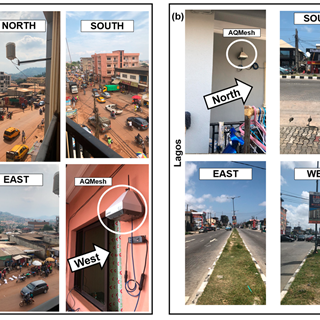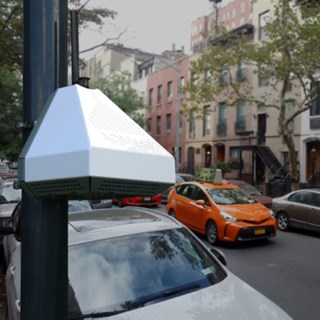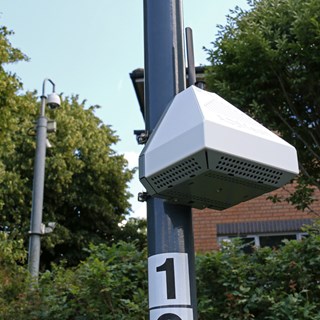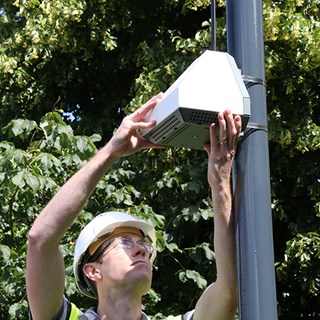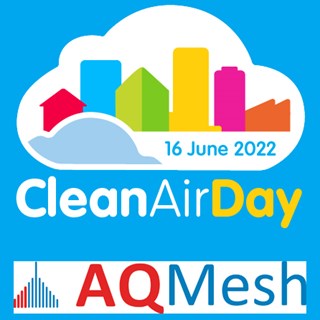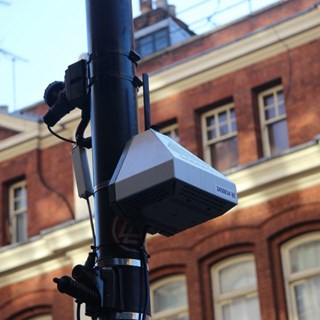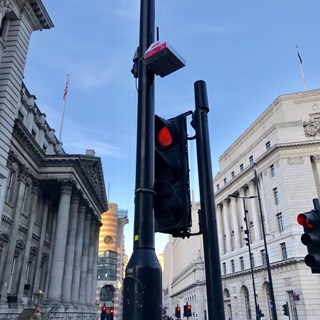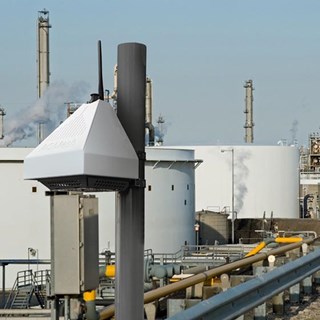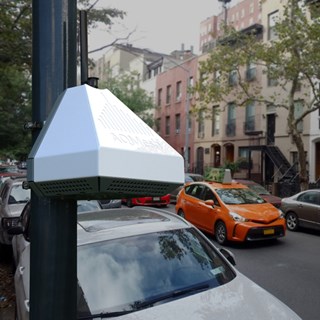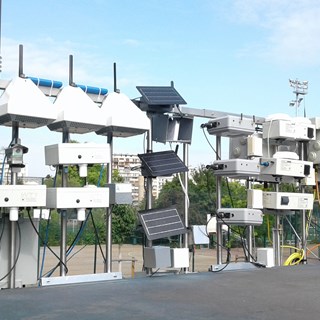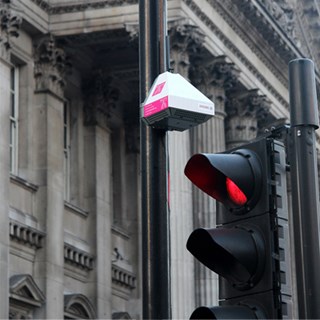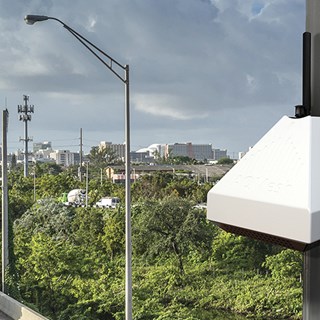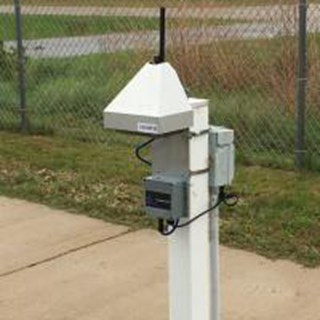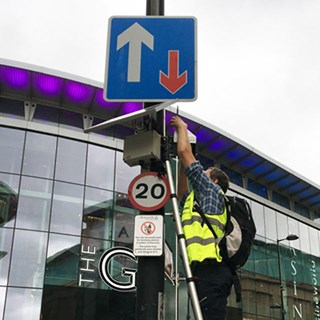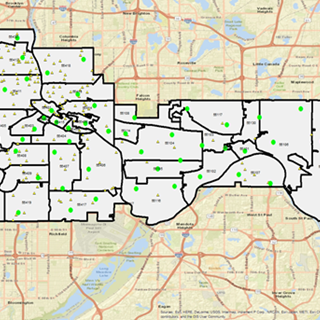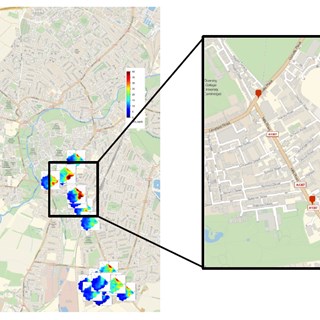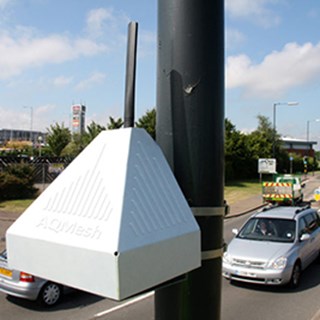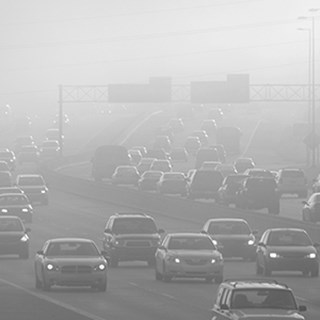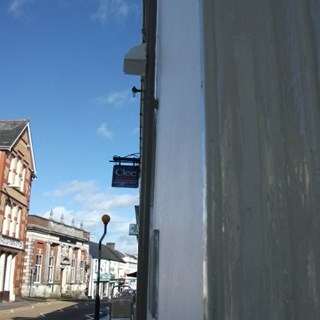It’s great to see the team at the Department of Atmospheric Chemistry, University of Cambridge using their AQMesh pods for another project, this time in Lagos, Nigeria and Yaoundé, Cameroon.
Read MoreGenerally, the limiting factor will be budget. The clue is in the name with hyperlocal air quality monitoring, and pollution levels can vary hugely over short distances. NO measurements around streets, for example, are often significantly different from one side of the road to the other, particularly if there isn’t much wind and/or a street canyon effect.
Read MoreAQMesh is being used as part of the newly revived Breathe Easy Dallas initiative – a project designed to measure and understand air pollution at neighbourhood level.
Read MoreA network of 22 AQMesh pods was originally deployed in collaboration with Newcastle University and Newcastle City council to monitor air pollution outside schools near major traffic routes. The main objectives of the study were to determine levels of NO2, PM1, PM2.5 and PM10 - and whether these exceeded the WHO guidelines - as well as estimate children’s exposure to harmful particles.
Read MoreAQMesh is currently being used in a number of air quality monitoring initiatives by a range of users. Across the UK, for which today is its annual Clean Air Day campaign, there are a number of pods deployed outside schools, being used by ambulance services, installed at metal foundries and at railway stations.
Read MoreA UK local authority measured the difference in local air pollution levels when reopening roads that had previously been closed for social distancing purposes as part of Covid-19 mitigation efforts.
Read MoreWhilst there may be a growth in city-wide communications integration, “big data” and public interest in local air quality, the challenges of monitoring complex atmospheric chemistry have not changed. Integrating “sensors” can sound straightforward but information about air quality around a city must be handled carefully.
Read MoreBreathe London preliminary analysis results reveal substantial NO2 pollution reductions after the UK government implemented restrictions to reduce the spread of Covid-19, particularly after social distancing was strongly encouraged on 16 March.
Read MoreTechnology is critical to so many essential services during the current global COVID-19 crisis, but it is also allowing local air quality to continue to be monitored, in real-time, across the world. Small sensor air quality monitors such as AQMesh pods can use cloud data storage to ensure that air quality information is stored and accessible even when staff are not able to visit equipment.
Read MoreThe small sensor air quality monitoring world has moved on during the last three years and we have identified several new challenges and benefits relating to the continual development of air quality monitoring technology.
Read MoreThe results of the 2019 AIRLAB Microsensors Challenge* were revealed in Paris on 21st January and AQMesh was awarded the highest score for accuracy of all products presented for monitoring of outdoor air quality.
Read MoreLast month Environmental Defense Fund Europe (EDFE) together with Mayor Sadiq Khan are releasing the second wave of data from Breathe London, an ambitious collaborative project to measure and map air pollution across the capital.
Read MoreWhilst not the only AQMesh pods still in regular use since the product was commercially launched in 2013, two AQMesh pods are still in use in Spain and demonstrate the long life of this small sensor air quality monitoring system.
Read MoreMinnesota Pollution Control Agency (MPCA) has been monitoring Minnesota’s air quality for a number of years, and it is generally considered to be good. However, MPCA wanted to understand how air pollution varies across small distances in order to minimise vulnerable communities’ exposure to harmful pollutants.
Read MoreThe UK’s first Urban Observatory, led by Newcastle University, has been designed to provide a digital view of how cities work. AQMesh air quality monitoring equipment is being deployed across Newcastle and Gateshead.
Read MoreOn Sunday 13th May 2018, Cardiff Council organised a car-free day in the city’s central area. As a result of this event air quality monitoring data showed an average 69% drop in nitrogen dioxide (NO2) – one of the pollutants of greatest public health concern.
Read MoreMinnesota Pollution Control Agency (MPCA) has purchased fifty AQMesh pods to measure key air pollution gases and particulate matter across fifty different zip code areas.
Read MoreIT teams are attracted by how readily data can be integrated and communicated whilst air quality professionals focus on how meaningful the air quality readings are.
Read MoreSmart city projects increasingly seek to include air quality measurements. If city authorities and the public are being asked to act based on air quality readings they must be credible.
Read MoreA new generation of air quality monitors is now being offered to provide localised, real-time air quality readings – but the potential benefit is only just starting to be realised.
Read MoreSituated in the south west of Wales (UK), in a largely rural area bordering the Brecon Beacons, Carmarthenshire’s air quality is predominantly good.
Read More
